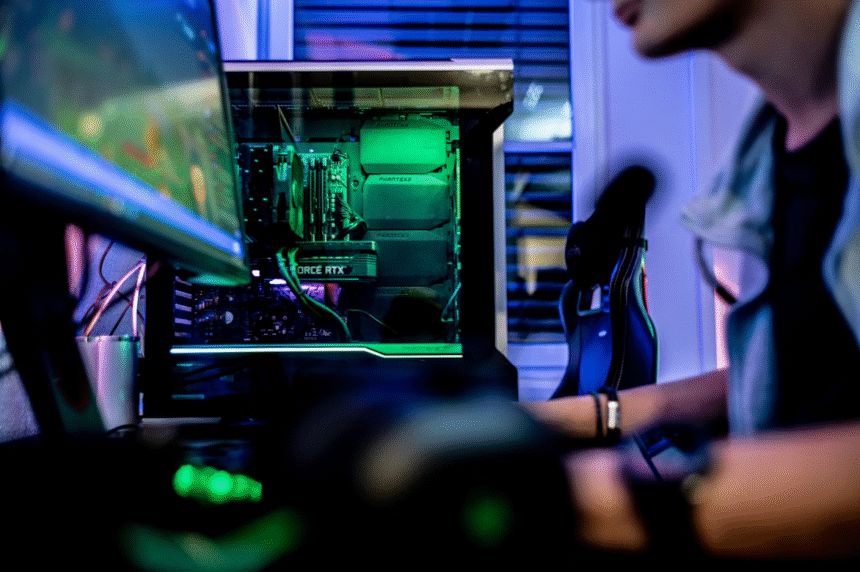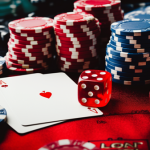The competitive gaming landscape has evolved dramatically in 2025, with professionals leveraging cutting-edge technology and advanced training methods to gain the slightest edge over opponents. Whether you’re grinding the ranked ladder in Valorant or competing in Call of Duty tournaments, these advanced tactics can elevate your gameplay to new heights. Let’s dive into the strategies that are revolutionizing how top players approach competitive gaming this year.
- 1. Mastering the Ever-Changing Meta
- 2. Cutting-Edge Hardware Setups
- 3. Next-Gen Mental Performance Optimization
- 4. AI-Assisted Training and Analysis
- 5. Elite Team Communication Systems
- 6. Performance Analytics Platforms
- 7. Optimized Competitive Settings
- 8. Pro Training Regimens
- 9. Sensory Enhancement Tools
- 10. Leveraging Legal Competitive Advantages
- The Future of Competitive Gaming
1. Mastering the Ever-Changing Meta
Staying ahead of the meta isn’t just helpful anymore—it’s essential. Games like Call of Duty, Rainbow Six Siege X, and CS2 experience frequent balance changes through patches, pro innovations, and community discoveries. The most successful players don’t just adapt to these changes; they anticipate them.
Pro teams now rely heavily on data analytics platforms like Shadow.GG and Mobalytics to track performance metrics, identify emerging strategies, and optimize their gameplay. Team Liquid has openly credited their recent tournament success to their investment in advanced analytics. By studying patch notes meticulously and monitoring pro player streams, you can stay weeks ahead of the competition instead of scrambling to catch up.
2. Cutting-Edge Hardware Setups
Professional gamers have embraced next-generation hardware that provides measurable performance advantages. The adoption of 360Hz OLED monitors, ultra-low latency wireless mice like the Logitech G Pro X Superlight 2, and custom mechanical keyboards with hot-swappable switches allows for unprecedented responsiveness and precision.
The current benchmark for competitive rigs centers around Intel’s 15th-gen Core Ultra CPUs paired with RTX 5090 GPUs, delivering frame rates that were unimaginable just a year ago. Serious players are also investing in ergonomic setups with adjustable gaming chairs featuring robust lumbar support and posture sensors—critical for maintaining performance during marathon gaming sessions.
3. Next-Gen Mental Performance Optimization
The mental game has become as important as mechanical skill. Elite competitors now engage in structured focus training, meditation protocols, and use biofeedback apps like MindMate to manage tilt, improve cognitive processing, and enhance memory retention before matches.
These psychological routines aren’t just feel-good measures—they’re producing measurable results. Recent studies show players implementing these techniques experience up to 17% faster reaction speeds in high-pressure situations. The difference between choking and clutching often comes down to mental preparation, especially in high-stakes tournaments.
4. AI-Assisted Training and Analysis
AI coaching tools have transformed how players identify and fix weaknesses in their gameplay. Applications like AimLab’s AI Coach and Overwolf’s AI VOD Review automatically break down player mechanics, movement efficiency, and positional errors, offering personalized training regimens that would require dozens of hours with a human coach.
These systems create “micro improvement segments” tailored to your specific weaknesses. The results speak for themselves—case studies show players implementing AI-guided training experiencing a 22% increase in rank within a single month. For anyone serious about improvement, these tools have become non-negotiable elements of daily practice.
5. Elite Team Communication Systems
Leading squads no longer rely on basic callouts. They’ve evolved to using real-time tactical overlays, encrypted voice communications, and shared strategic dashboards during matches. These advanced communication systems allow for complex strategies and split-second adjustments that simply weren’t possible with traditional methods.
Organizations like FaZe Clan have developed comprehensive playbooks with conditional tactics—team members regularly drill “what-if” scenarios to prepare for any situation they might encounter. Teams implementing these structured communication protocols have seen scrim performance improve by 12% compared to control groups using standard callouts.
6. Performance Analytics Platforms
The data revolution has fully arrived in competitive gaming. Services like Battlelog and similar analytics platforms provide deep insights on accuracy, K/D ratios, positional tendencies, and team synergy that were previously inaccessible to most players.
Pro players rely on customized dashboards to identify patterns in their gameplay that would be invisible to the naked eye. Those using comprehensive analytics consistently show documented improvements in both individual performance and tournament placement. The ability to quantify improvement has become a cornerstone of professional development in esports.
7. Optimized Competitive Settings
The difference between good and great often comes down to optimization. Top players now customize their settings for each specific weapon class and game situation, rather than using a one-size-fits-all approach. This includes precise FOV adjustments (104 is now considered optimal for Warzone), tailored DPI settings for different engagement distances, and custom keybinds for faster ability execution.
These configurations spread quickly through the pro community whenever a top-ranked player discovers an advantage. Staying current with these setting optimizations can provide immediate improvements to both mechanical performance and tactical awareness without requiring additional practice time.
8. Pro Training Regimens
Elite players follow structured training schedules that balance mechanical practice, strategic development, VOD review, and physical fitness. A typical high-level regimen includes two hours of mechanical drilling, one hour of strategy work, one hour of VOD analysis, and regular fitness breaks to prevent burnout.
This holistic approach recognizes that peak performance requires more than just game time. Sleep optimization, nutritional planning, and scheduled recovery periods have become standard practice among professionals who need to maintain high performance levels across consecutive tournament seasons.
9. Sensory Enhancement Tools
The bleeding edge of competitive advantage in 2025 involves sensory enhancement technologies. Haptic feedback gloves, auditory focus headsets, and eye-tracking overlays train spatial awareness and information processing speeds beyond what was previously possible with conventional practice methods.
Early adopters report remarkable improvements in clutch scenarios and reaction time, with measured gains exceeding 20% over control groups. While these technologies are still finding their footing in mainstream competition, they’re already proving decisive advantages in Valorant, CS2, and Call of Duty tournaments.
10. Leveraging Legal Competitive Advantages
Serious competitors are increasingly utilizing specialized networking tools like dedicated IP VPNs to reduce latency, access global tournaments, and ensure stable connections during competition. This approach has democratized competitive gaming, allowing talented players from underrepresented regions to compete on more equal footing.
It’s critical to note that legitimate advantages focus on peripherals, training technology, and networking optimization—not exploits or cheats that violate game terms of service. The goal is sustainable improvement that translates to long-term competitive success.
The Future of Competitive Gaming
Tournament data from early 2025 already shows a 15-22% performance improvement among teams adopting these advanced techniques. As we move deeper into the year, the integration of AI coaching, biofeedback training, and next-generation hardware will continue reshaping what’s possible in competitive gaming.
By implementing even a few of these tactics, you’ll gain measurable advantages over competitors stuck using outdated methods. The competitive gaming landscape rewards innovation—those willing to embrace these advanced approaches will find themselves climbing the ranks faster than ever before.














